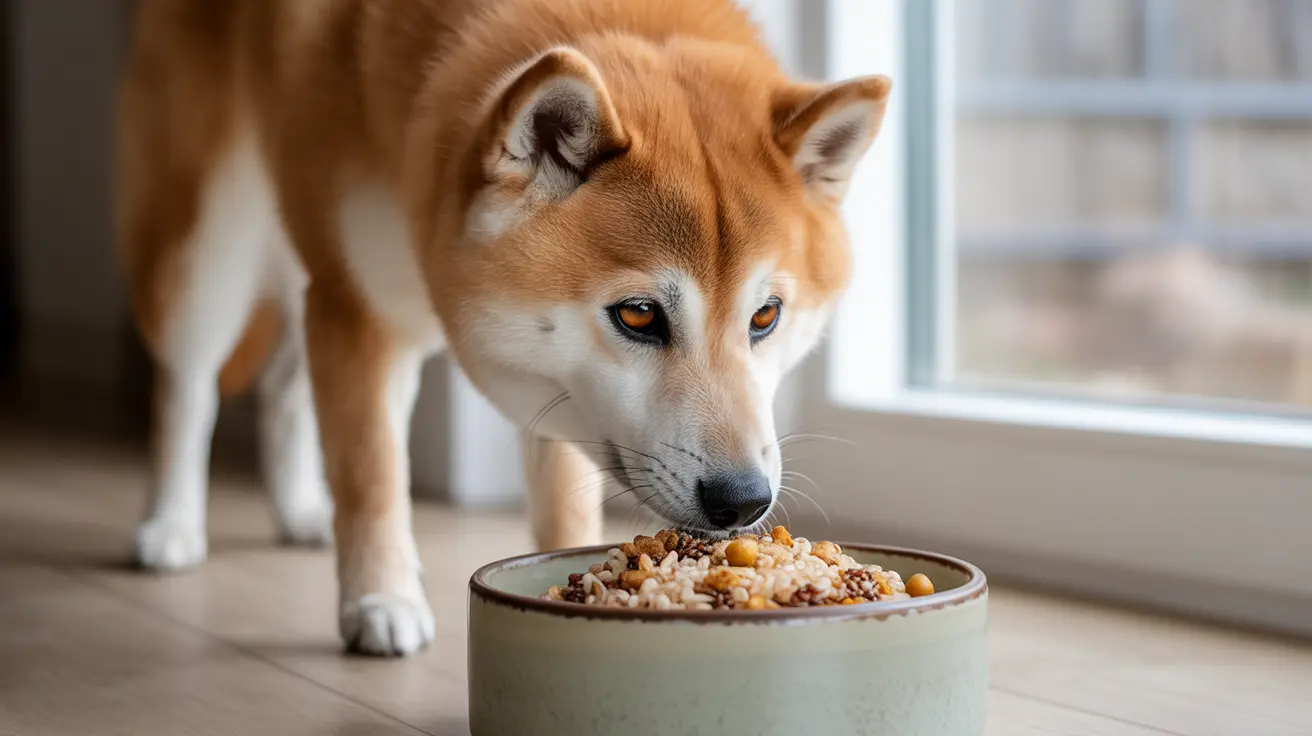Making the switch from grain-free to grain-inclusive dog food has become increasingly important as research continues to highlight the potential benefits of grains in canine nutrition. Whether you're concerned about recent FDA findings regarding grain-free diets or simply want to diversify your dog's nutritional intake, adding grains to your dog's food requires careful consideration and proper implementation.
In this comprehensive guide, we'll explore the safe and effective methods of incorporating healthy grains into your dog's diet, along with expert recommendations and essential precautions to ensure your furry friend's optimal health.
Understanding the Benefits of Adding Grains
Grains offer several vital nutrients that contribute to your dog's overall health. They provide essential fiber for digestive health, B vitamins for energy metabolism, and antioxidants that support immune function. Recent studies suggest that dogs with grain-inclusive diets often show better gut microbiome diversity, which is crucial for overall health and immunity.
Moreover, properly chosen grains can help balance diets that might otherwise rely too heavily on ingredients like legumes or potatoes, which have been associated with certain health concerns in dogs.
Selecting the Right Grains for Your Dog
Best Grain Options
Not all grains are created equal when it comes to canine nutrition. Here are the top choices:
- Brown rice: Easily digestible and gentle on sensitive stomachs
- Oatmeal: High in fiber and protein, excellent for steady energy release
- Quinoa: A complete protein source rich in essential amino acids
- Barley: Packed with fiber and beneficial nutrients
- Millet: Easy to digest and naturally gluten-free
Proper Introduction Methods
Starting the Transition
The key to successfully adding grains to your dog's food lies in a gradual, measured approach:
- Start with small amounts (1-2 tablespoons for medium-sized dogs)
- Choose one grain type to begin with
- Mix thoroughly with regular food
- Monitor your dog's response for 5-7 days
- Gradually increase portions if no adverse reactions occur
Portion Control and Timing
Keep added grains to 10-20% of your dog's total daily food intake. This ensures proper nutritional balance while allowing enough room for the primary protein sources and other essential nutrients in their diet.
Monitoring Your Dog's Response
Watch for these positive signs that indicate successful grain integration:
- Consistent energy levels
- Normal stool consistency
- Healthy appetite
- Shiny coat
- Clear eyes and skin
Conversely, be alert for potential signs of grain sensitivity:
- Excessive scratching
- Digestive upset
- Changes in stool consistency
- Lethargy
- Ear infections
Frequently Asked Questions
How do I safely and gradually add grains to my dog's grain-free food?
Start with small amounts of a single grain type, mixing 1-2 tablespoons into your dog's regular food. Monitor their response for a week before increasing portions gradually.
Which grains are the best and safest to introduce to a dog's diet?
Brown rice, oatmeal, and quinoa are among the safest and most nutritious grains for dogs. These options are generally well-tolerated and provide excellent nutritional benefits.
What signs should I watch for to know if my dog has a grain allergy or sensitivity?
Watch for itching, digestive issues (vomiting or diarrhea), ear infections, or changes in energy levels. If you notice any of these symptoms, discontinue grain addition and consult your veterinarian.
How much grain should I add to my dog's daily food without causing nutritional imbalance?
Limit added grains to 10-20% of your dog's total daily food intake to maintain proper nutritional balance.
Can adding grains to my dog's diet help reduce the risk of canine heart disease like DCM?
While research is ongoing, some studies suggest that balanced diets including grains may help reduce the risk of DCM compared to grain-free diets high in legumes and potatoes. However, consult with your veterinarian for personalized advice.
Conclusion
Adding grains to your dog's food can be a beneficial dietary change when done correctly. Remember to start slowly, choose appropriate grains, and monitor your pet's response carefully. Always consult with your veterinarian before making significant changes to your dog's diet, especially if they have existing health conditions or dietary sensitivities.






